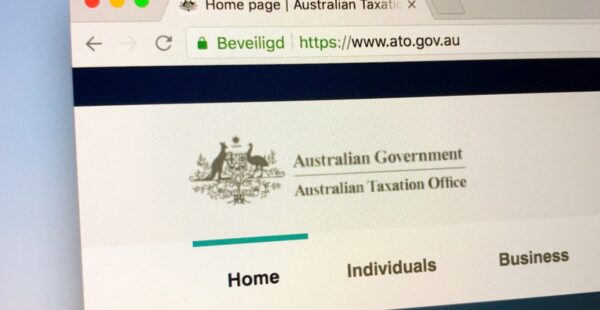RBA confirms fourth-straight rate hold for the year

The Reserve Bank of Australia (RBA) has left the market unsurprised at its latest policy decision to keep the official cash rate at 4.35 per cent for the fourth consecutive time, with the Board acknowledging it is facing a challenge to balance the impact of inflation on different groups of people.
Announcing the outcome of its two-day meeting today, RBA Governor, Michele Bullock, said while inflation has dived substantially since its 2022 peak as higher interest rates work to curb household spending, the “pace of decline” has somewhat slowed according to recent data.
“Over the year to April, the monthly CPI indicator rose by 3.6 per cent in headline terms, and by 4.1 per cent excluding volatile items and holiday travel, which was similar to its pace in December 2023,” the Board’s statement said.
“Broader data indicate continuing excess demand in the economy, coupled with elevated domestic cost pressures, for both labour and non-labour inputs. Conditions in the labour market eased further over the past month but remain tighter than is consistent with sustained full employment and inflation at target.
“Wages growth appears to have peaked but is still above the level that can be sustained given trend productivity growth. Recent data revisions suggest that consumption over the past year was stronger than previously suggested. At the same time, output growth has been subdued, and consumption per capita has been declining, as households restrain their discretionary expenditure and inflation weighs on real incomes.”
The Board’s statement reaffirmed its belief that the economic forecast remains “uncertain” and the path to return to target inflation indicators is “unlikely to be smooth”, still aiming for two to three per cent by mid-2025 and to the midpoint in 2026.
“[Since the central forecasts were published in May], there have been indications that momentum in economic activity is weak, including slow growth in GDP, a rise in the unemployment rate and slower-than-expected wages growth. At the same time, the revisions to consumption and the saving rate and the persistence of inflation suggest that risks to the upside remain,” the Board said.
“Recent budget outcomes may also have an impact on demand, although federal and state energy rebates will temporarily reduce headline inflation. The persistence of services price inflation is a key uncertainty. Also, although growth in unit labour costs has eased, it remains high. Productivity growth needs to pick up in a sustained way if inflation is to continue to decline.”
The RBA Board also said medium-term inflation expectations have remaining within sights of its target, despite several economic uncertainties around the growth of consumption. The policy decision also confirmed the Board continues to not “rule anything in or out” to ensure inflation is returned to target, with no clear indication of a rate cut timeline.
“Real disposable incomes have now stabilised and are expected to grow later in the year, assisted by lower inflation and tax cuts. There has also been an increase in wealth, driven by housing prices. Together, these factors are expected to support growth in consumption over the coming year. But there is a risk that household consumption picks up more slowly than expected, resulting in continued subdued output growth and a noticeable deterioration in the labour market.
“More broadly, there are uncertainties regarding the lags in the effect of monetary policy and how firms’ pricing decisions and wages will respond to the slower growth in the economy at a time of excess demand, and while conditions in the labour market remain tight.
“Inflation is easing but has been doing so more slowly than previously expected and it remains high. The Board expects that it will be some time yet before inflation is sustainably in the target range.
“While recent data have been mixed, they have reinforced the need to remain vigilant to upside risks to inflation. The path of interest rates that will best ensure that inflation returns to target in a reasonable timeframe remains uncertain.”
Portfolio Manager at Insight Investment, Harvey Bradley, said the RBA’s more “balanced outlook” follows the release of conflicting economic data and puts the central bank at odds with others who have commenced easing interest rates.
“The Q1 wage index came in lower than expected but April CPI and the monthly employment data has been stronger. We think this keeps the RBA in a holding pattern for foreseeable future and they won’t want the market to perceive either a dovish or hawkish bias at this point,” he said.
“We expect that the RBA will be on hold for an extended period and be one of the last developed market central banks to move, until they can be more confident inflation has returned to their target on a sustainable basis. This may take some time and we think cuts will only be on the table early next year.
“Australian government bonds have underperformed developed market peers over the last few months as central bank expectations have re-priced more meaningfully in other markets. In our view, Australian bonds are now close to fair value, both in outright levels and relative to other markets.”












Canberra Morons strike YET AGAIN. How about also imposing a Levy on tax payers that have to enter into a…
Only 3 types of Advisers using AMP North. The morally and or ethically bankrupt Adviser, or the adviser that pays…
AI is going to change everything within the next ten years. Many will be lucky to have jobs.
More Red Tape & more compliance costs. Let’s make Advice more affordable says Canberra = More Red Tape ALWAYS
They don't care about effectively targeting and apportioning a funding levy in a fair way. This will be like the…